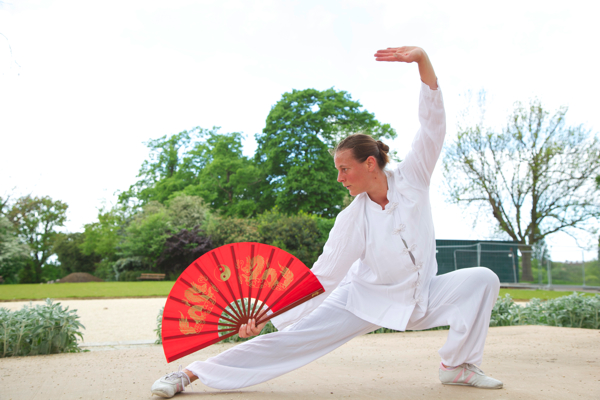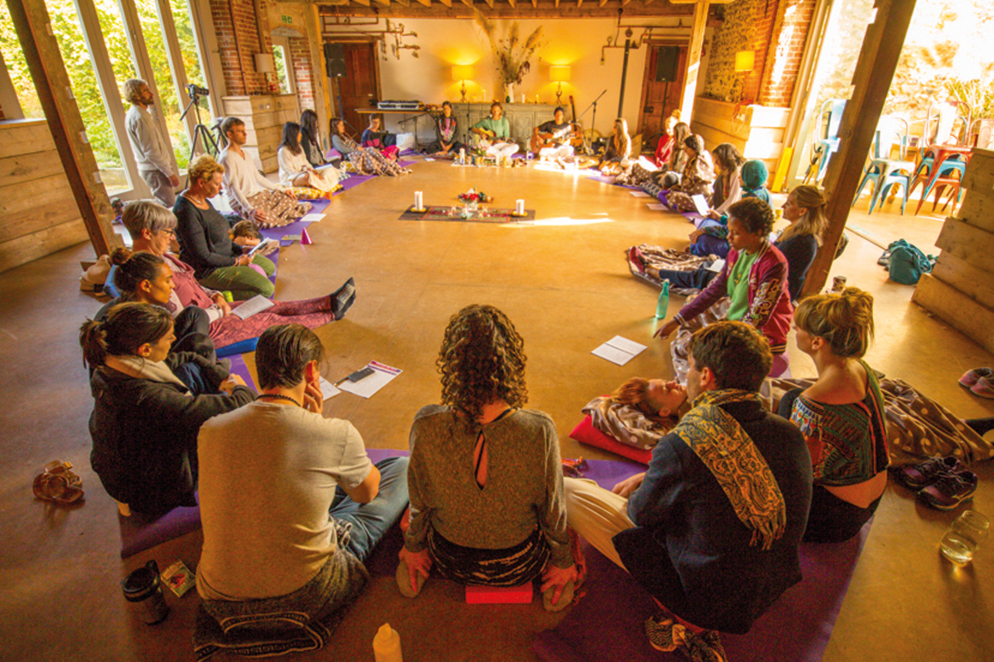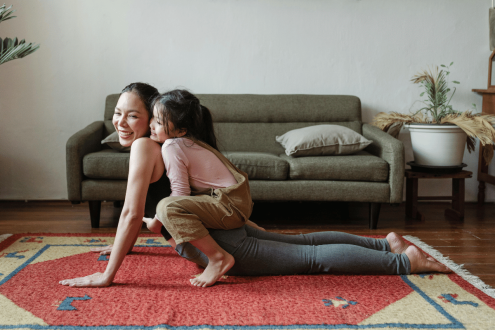Body-centred meditation for a happier, healthier life
Ahead of her workshops at Psychologies' stillness retreat, Dr Tamara Russell explains how mindfulness in motion can help us find peace and stillness in our everyday lives

The relentless pace of our modern lifestyle is at odds with optimum human functioning. The increasing amount of time spent in the virtual world, absorbed by smartphones and tablets, leaves us up ‘in our heads’ and disconnected from the body.
This disconnection fuels the rising tide of physical health problems and also impacts negatively on our ability to identify, tolerate and regulate emotions expressed in the body, prompting mental health difficulties and perhaps some of the so-called ‘medically unexplained symptoms’.
Cognitively, information overload compromises our attentional system, making it difficult to pay attention to one thing at a time or for any sustained period. These are the mental and physical consequences of our current lifestyle, and there is a need for solutions to reduce this suffering. Is mindfulness training an ancient antidote to some very modern problems?
Listening to the body
Increasing body awareness, developing emotional tolerance and cultivating attentional capacity are all components of mindfulness training. Learning to pay attention to the body is a foundational skill. This process strengthens the attentional system, with the knock-on effect of being better able to focus, shift and monitor attention in any situation.
Using the body as the attentional training object also increases body awareness and allows a more subtle delineation of bodily sensations. This improves the ability to notice if the body is communicating something noteworthy regarding physical pains (or pleasures) or emotional states (negative or positive).
In both cases, a deeper connection with the body allows us to notice earlier on when something important might be happening, and make a considered response. Learning to engage with these experiences in a gentle and accepting way is a crucial aspect of mindfulness training that must not be neglected.
As we practice relating in a kinder way to our own thoughts and feelings, it become possible to relate to others in a more authentically compassionate way.
Mindfulness in motion
To get these benefits, mindfulness training is most often conducted in a static position (sitting or lying down), in a quiet setting, for a set period of time, on a regular (ideally daily) basis. However, this way of training can be difficult for those who struggle to find the time, or who find it hard to sit still, or who have very busy minds. For these individuals, mindful movement training might be a better option to get them started in their training and able to access the benefits described.
My book, Mindfulness in Motion, lays out a five-part training programme that uses the moving body as the main training tool. It explores five key themes including Pause, Intention, Attention, Mental Habits and Compassion through a variety of movement exercises, with links to the underlying neuroscience and psychological theory behind mindfulness training.

Using movement as the training object for mindfulness means that any time you are moving you can be training your mind. This could include mindfulness of everyday movements (such as brushing your hair or teeth, walking to the front door, drinking a cup of tea) and/or new movement sequences (such as those taught in yoga or tai chi).
Attention to movement
When a mindful, gentle, attention is brought to everyday movements, you are training your mind in the ability to move between automatic and what is called ‘controlled’ processing. Well-learned movement sequences are revisited, seen as if for the first time, as they are brought out of automatic mode and consciously examined.
In this process, there may be the chance to experiment moving differently, more effectively, or in a way that promotes gentleness and ease rather than striving and agitation. An identical process is required when developing mindfulness of mental habits; the transition from automatic reactive modes to an attended, considered response.
Examining habits in a kind way means we can give due consideration to whether we wish to keep these habits or let them go. Attention can be brought to any movement, no matter how big or small.
Movements unfold over time with each portion of the movement having a distinct set of sensory consequences at any given ‘now’ moment. Therefore, attending to the changing sensations as you move is a sure-fire way to ensure you are right here, right now. Attending to this constantly updated sensory information seems to be a particularly helpful way for those with very busy minds or who practice in highly distracting environments to be present.
You can also pay attention to the intention to move. This training is particularly powerful as intentions underlie the majority of our thoughts, speech and action in the world. Training with the more obvious movement-related sensations supports and develops our ability to engage with the more slippery and abstract mental sensations.
Present moment
Novel movements evoke a mindful state – we have to set a deliberate intention to learn the movement and maintain our motivation to attend to the task. We often go slowly in order to see the detail of a new movement, checking the angles, the speed and the posture. We learn new movements best under conditions of non-judgment and non-striving although this element can sometimes be lacking.
Learning a new movement mindfully can give a real glimpse of what it means to be in a present moment state, and manage states of mind-wandering in a different way.
Mindful movement is a great way to train your body and mind together. If you haven’t got time to go to the gym and to a mindfulness class then why not combine the two together? You have a great workout or stretch for the body whilst at the same time training the mind and learning more about yourself.
The trick is to very intentionally decide to do the movement in a mindful way – paying attention, moment by moment, without judging. Remembering to do this can be a challenge but in Mindfulness in Motion, a process is offered to get you started and experimenting with how mindful movement might be your route to a happier and healthier life, combining neuroscientific understanding with practice exercises and real-world experiments.
Integrate mindfulness into every move you make to ensure you are present for your life and continually developing self-awareness and emotional intelligence.
Dr Tamara Russell is a neuroscientist, author, clinical psychologist, martial arts expert and leading mindfulness trainer. She has helped people all around the world to transform their lives using her groundbreaking techniques.
Tamara will host workshops at Psychologies Stillness Retreat with NOW Live Events, taking place between 17-19 February.
The retreat includes three workshops a day at West Lexham retreat centre, where you can follow the wisdom of our stillness experts to reclaim a sense of wellness and connection in your life. Join us and find out more here.

Mindfulness in Motion: a happier, healthier life through bodycentred meditation by Dr Tamara Russell (Watkins Publishing, £12.99) is out now.
Watch Tamara explain her approach to mindfulness and motion here:
https://www.youtube.com/watch?v=a-3D7sGvGrc 









